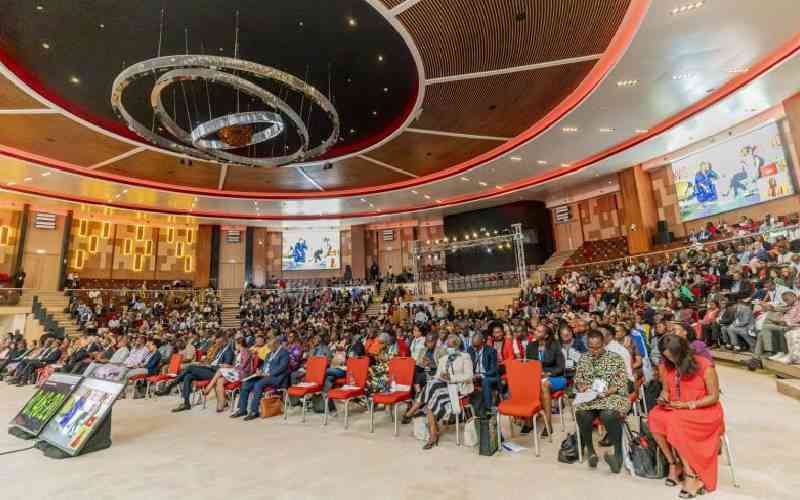In basic terms an animal that cannot walk properly suffers from a kind of lameness. This condition points to a health problem with the animal’s locomotion system specifically the hind and fore limbs.
Lameness results in difficulties in walking, a process that supplements feeding especially where animals are on extensive grazing system.
This is a major cause of economic loss in livestock production. Lameness can cause infertility where bulls are used for breeding as a lame bull may not be able to mount. A lame animal will not fetch as much money on the market even when it is in perfect body condition.
Lameness is caused by injuries, fractures, infectious diseases affecting any part of the limb; it can also be precipitated by nutritional deficiencies or disorders. Grain overload for example result in laminitis which causes lameness. Main causes of lameness in cattle involve parts of the foot below the ‘ankle’.
In this article, I will explore three conditions that cause lameness although there are other infections like toe abscess, hairy heel wart, septic joints, laminitis that also cause lameness in livestock.
Foot rot
This is a common infectious bacterial disease that affects skin between the hooves and causes severe lameness. The causative bacteria are abundantly present in animal manure and soil and enter the body through a broken skin resulting from inter-digital skin injuries from pricks, bruises and cracks.
Selenium, zinc and copper are important in maintaining skin integrity and their deficiency cause cracking of skin creating openings that the bacteria uses to infect the foot.
Injuries can be caused by animal grazing in thorny areas, dried mad spikes, rough/stony grounds or standing for prolonged periods in wet and muddy conditions.
Sharp stem stumps of maize, napier, shrubs and other crops that remain in grazing fields can easily cause injuries to the inter-digital space and predispose an animal this disease.
As the name suggests; the disease literally causes rotting of an animal’s foot. Foot rot lesions will have pus and foul smell and are painful. These characteristic clinical signs of this disease give it two synonyms namely foul foot and sore foot.
The disease affects the soft tissues between hooves; infected animals act as sources of infection to other animals, foot rot will thus affect more than one animal in a herd at any given time. The infection causes sudden onset of lameness; the hind legs are commonly affected and more than one leg can be infected at the same time. The skin between the hooves will swell, turn red and is very painful. This pain makes the animal to lift the affected limb, appear depressed and will feed less.
Treatment
As the diseases progresses the swelling will burst producing foul smelling pus and decaying tissue. If not treated at this stage the infection will take a chronic course and can spread to deeper to joints, tendons and soft tissues.
To examine your animal for suspected case of foot rot; pick up the limping foot and examine the soft tissue between hooves and check for swelling and foul smell.
Stay informed. Subscribe to our newsletter
Swelling between the hooves is a cardinal clinical sign for foot rot. The anatomy of the dewclaws can be used to diagnose not only foot rot but other foot disorders in health the dewclaws will be symmetrical (on the same horizontal plane) in sickness they are normally asymmetrical and wide apart.
Fortunately the infection is easily treatable with long acting antibiotics injections; topical medication seldom treats foot rot. Prevention is through ensuring good health of the foot through good housing and giving zinc, selenium and copper supplement to your animals.
Foot and Mouth Disease
Foot and Mouth Disease (FMD) is an infectious viral disease affecting hooved wild and domestic animals namely cattle, sheep, goats, deers, hedgehogs, elephants and antelopes. The disease doesn’t affect horses.
In livestock production, the disease is rarely fatal in mature animals but can cause death in non-vaccinated young animals.
The diseases cause lameness and affects trade as it results in local quarantines and inaccessibility to international markets for animal products from affected countries.
Foot and mouth disease is a trade restricting disease. The disease is still endemic in Africa; despite efforts to eradicate it. Foot and mouth disease is spread through saliva, milk and semen from infected animals that contaminates buildings, pens and feeds from where other animals get the infection through contact. In humid environments the disease can also be spread through aerosols.
The virus can be carried by shoes, clothes and vehicles from infected farms and biosecurity is one of the main control measures in outbreaks.
The disease is characterised by blisters and sores on the muzzle, lips, mouth, teats and on the upper border of hoof and skin (coronary band). Sores in the hoof cause severe lameness.
The swelling in the mouth and tongue result in excess salivation, reluctance to move and loss of appetite. Secondary infections are common.
In pigs, lesions occur only on the feet and not in the mouth while in sheep and goats the disease is so mild but they act as carriers of the disease for cows and pigs.
In prolonged cases, permanent hoof damage and chronic mastitis have been recorded.
Foot and mouth disease can be prevented through vaccination and strict biosecurity measures during outbreaks to limit its spread to “clean areas/farms”. In outbreaks minimise number of visitors to your farm and disinfect wheels of any vehicle entering your farm.
If people must enter then provide protective clothes which you must disinfect after a single use. Thoroughly clean and disinfect contaminated premises and animal equipment and isolate sick from healthy animals.
Fractures
Limb fractures are common in cattle and they can result from bone breakages following fights, accidental falls or nutritional deficiencies.
They are most common in animals less than one year. While fractures can heal in young cattle, in mature animals the weight and immobilisation technique is a major challenge in fracture treatment.
Culling (the process of segregating organisms from a group according to desired or undesired characteristics)maybe the only option available to the farmer in most mature animals fractures unless the animal is of very high genetic value which the farmer wishes to preserve.
Calves do suffer limb fractures during difficult/aided birth or they can be stepped on by the other cows. In such cases casts can be used to treat the fracture. Fractures cause sudden lameness and severe pain.
Handle animals gently to avoid stampeding incidences when moving animals; tethered animals should also be regularly observed to prevent rope strangulation which can also cause fractures.
Accurate diagnosis and timely treatment are key in lameness management. Nutrition is important in skeletal system health. Vitamin D and E, Manganese, Selenium and calcium should be included in the animal’s diet.
(The writer is a veterinary surgeon working with the Kenya Tsetse and Trypanosomiasis Eradication Council – KENTTEC)
 The Standard Group Plc is a
multi-media organization with investments in media platforms spanning newspaper
print operations, television, radio broadcasting, digital and online services. The
Standard Group is recognized as a leading multi-media house in Kenya with a key
influence in matters of national and international interest.
The Standard Group Plc is a
multi-media organization with investments in media platforms spanning newspaper
print operations, television, radio broadcasting, digital and online services. The
Standard Group is recognized as a leading multi-media house in Kenya with a key
influence in matters of national and international interest.
 The Standard Group Plc is a
multi-media organization with investments in media platforms spanning newspaper
print operations, television, radio broadcasting, digital and online services. The
Standard Group is recognized as a leading multi-media house in Kenya with a key
influence in matters of national and international interest.
The Standard Group Plc is a
multi-media organization with investments in media platforms spanning newspaper
print operations, television, radio broadcasting, digital and online services. The
Standard Group is recognized as a leading multi-media house in Kenya with a key
influence in matters of national and international interest.





